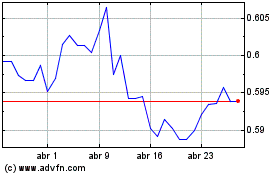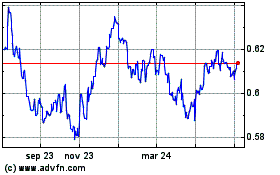German Industrial Output Falls Unexpectedly; Exports Drop Most In 5 Months
07 Septiembre 2018 - 3:55AM
RTTF2
Germany's industrial production declined unexpectedly and
exports logged its biggest fall in five months in July, signaling a
weak start to the third quarter.
Industrial production fell 1.1 percent month-on-month in July,
bigger than the 0.7 percent fall in June, data from Destatis
revealed Friday. Economists had forecast a 0.2 percent rise for
July.
Production in industry excluding energy and construction was
down by 1.9 percent in July.
On a yearly basis, industrial production grew 1.1 percent, but
slower than the 2.7 percent increase seen in June. Economists had
forecast a 2.6 percent rise for July.
The economy ministry said the current weakness in manufacturing
is related to temporary bottlenecks in car sales. Nonetheless, the
upturn in the industry is likely to continue.
Another data showed that exports fell unexpectedly by 0.9
percent on month in July, reversing June's 0.1 percent rise. This
was the first fall in three months and the biggest since February.
Shipments were forecast to climb 0.3 percent.
Meanwhile, monthly growth in imports accelerated to 2.8 percent
from 1.3 percent in June. Economists had forecast a marginal 0.1
percent rise.
As a result, the trade surplus fell to a seasonally adjusted EUR
15.8 billion from EUR 19.3 billion in the previous month.
On a yearly basis, exports advanced 7.6 percent and imports
climbed 12 percent in July. Consequently, the trade surplus
decreased to unadjusted EUR 16.5 billion in July from EUR 18.8
billion in the same period of last year.
Data showed that the current account surplus fell to EUR 15.3
billion from EUR 18.7 billion last year.
Despite the weakness in industrial production and foreign trade
data, Jack Allen, an economist at Capital Economics, said the
German economy looks set to continue growing at a decent pace,
helping to support the economic recovery elsewhere in the
euro-zone.
The latest weak data won't be enough to cause the European
Central Bank to extend its asset purchases into next year, but they
support the Bank's view that interest rate hikes are a long way
off, the economist added.
In another communiqué, Destatis said labor cost increased at a
slower pace of 0.2 percent sequentially in the second quarter after
rising 0.9 percent in the first quarter. On year, labor cost growth
eased to 2 percent from 2.4 percent.
NZD vs US Dollar (FX:NZDUSD)
Gráfica de Divisa
De Mar 2024 a Abr 2024

NZD vs US Dollar (FX:NZDUSD)
Gráfica de Divisa
De Abr 2023 a Abr 2024
